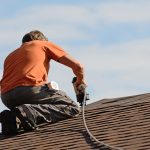Tile floors are known for being durable, stylish, and low-maintenance—but even the best materials have a lifespan. Whether your home is in the historic neighborhoods of downtown Glendale or a newer development near Arrowhead Ranch, your tile flooring might be showing signs of age.
Not sure whether you need simple repairs or a full replacement? This guide breaks down five common signs that it’s time to upgrade your tile flooring, along with helpful tips on your next steps.
1. Cracked, Chipped, or Loose Tiles
A few minor chips or cracks aren’t always a big deal, especially if they’re located in low-traffic areas. However, if multiple tiles are cracked, chipped, or shifting underfoot, that’s a clear signal something more serious is going on.
In Glendale, fluctuations in temperature or shifting foundations can cause tiles to loosen or break. If the issue is widespread, it may be more cost-effective to consider a full tile flooring replacement rather than constant repairs.
What to look for:
- Uneven or raised tiles
- Sharp edges from chips
- Tiles that move when stepped on
If you’re constantly calling for tile floor repair, it’s probably time to invest in something more permanent.
2. Grout That’s Beyond Cleaning
Grout plays a big role in how your tile floor looks—and how long it lasts. Over time, it naturally gets dirty, but it shouldn’t stay that way forever. If regular scrubbing doesn’t bring back its color or if it crumbles when touched, that’s a warning sign.
Older grout is often not sealed or protected like modern options. In Glendale homes that experience heavy foot traffic or pets, grout can wear out much faster.
Red flags include:
- Dark, stained grout that doesn’t lighten with cleaning
- Grout flaking away or falling out of joints
- Mold or mildew growing between tiles
Severely damaged grout not only looks bad but can also let water seep underneath the tile, leading to further issues.
3. Water Damage or Warping
While porcelain tile flooring is moisture-resistant, water damage can still occur—especially in older homes or improperly installed flooring. If you notice warping, bubbling, or soft spots, it’s likely water has gotten beneath the tile or affected the subfloor.
In Glendale, monsoon season and plumbing leaks are the most common causes. This is particularly relevant for flooring in bathrooms, kitchens, and laundry rooms where water use is frequent.
Warning signs include:
- Discoloration in tile or grout
- A “squishy” feel beneath the tile
- Unpleasant odors coming from the floor
Water damage often requires pulling up affected areas to inspect the subfloor. If the damage is extensive, full replacement is often the best solution.
4. Outdated Style That Affects Home Value
Tile designs have evolved dramatically over the last decade. If your floors are stuck in the early 2000s with pinkish tones, tiny squares, or dated patterns, it might be time for a visual refresh.
Homebuyers in Glendale are drawn to modern, clean styles—like wood-look planks, marble finishes, or large-format tiles. Even if your old tile is technically “fine,” an outdated look can impact your home’s resale value and curb appeal.
Current flooring trends include:
- Natural stone-look tile
- Large format (12×24 or 24×48) tiles
- Warm neutral colors like beige, taupe, and greige
- Seamless transitions from room to room
If you’re considering selling in the near future, replacing your tile can be a smart investment with long-term returns.
5. You’re Ready for a Functional Upgrade
Sometimes, replacement isn’t about damage—it’s about making your home better fit your lifestyle. Maybe your tile is too slippery for kids, too cold for your comfort, or hard to maintain with pets.
Today’s tile options offer better grip, cooler surfaces in summer, and easier cleaning. Some even include antimicrobial coatings or waterproof cores, making them ideal for Glendale’s desert climate.
Signs you’re due for an upgrade:
- Difficulty keeping floors clean
- Slipping hazards in bathrooms or entryways
- Tile that’s too cold or hard for young children or seniors
A local flooring contractor in Glendale can help you assess new tile options that work better for your space.
How to Choose the Right Replacement Tile
Once you’ve decided to move forward with replacement, choosing the right tile is the next step. Here’s a quick breakdown of options:
- Porcelain Tile: Best for durability and water resistance. Ideal for bathrooms, kitchens, and high-traffic areas.
- Ceramic Tile: Budget-friendly and stylish. Works well in less busy areas.
- Wood-Look Tile: Offers the warmth of wood with tile’s easy maintenance.
- Natural Stone: Adds luxury but requires sealing and more care.
- Textured Tile: Great for outdoor spaces or bathrooms where grip matters.
A trusted tile flooring contractor can show you samples and help you weigh the pros and cons of each material.
FAQs: Tile Flooring Replacement in Glendale, AZ
How long does tile flooring last?
Quality tile flooring can last 20–30 years, but foot traffic, maintenance, and installation quality all impact its lifespan.
Can I replace just part of my tile floor?
Yes, but it can be hard to match color and pattern exactly—especially if the original tile is discontinued.
What’s the best tile for homes with pets?
Porcelain tile is scratch-resistant and easy to clean, making it ideal for homes with dogs or cats.
Final Thoughts
Your tile flooring might still be functional—but if it’s cracked, dated, or difficult to maintain, replacing it could make your home safer, more comfortable, and more beautiful. Whether you live in historic Glendale or a newer suburb, knowing when to replace your floors is the first step toward a fresher, more modern home.
Need expert advice? Request a free consultation with a local flooring professional to explore your options, pricing, and design ideas.





